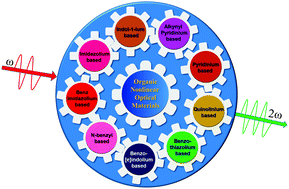Effects of the molecular structure on the second-order nonlinear optical properties of stilbazolium derivative single crystals: a review
Abstract
There is considerable interest in the design and development of organic nonlinear optical (NLO) materials with macroscopic second-order optical nonlinearities in the field of high-speed information processing, integrated photonics, and optical data storage. In recent years, organic stilbazolium cations have emerged as interesting chromophores for producing novel NLO materials due to their large structural diversity and flexibility nature. In this review, we summarise the major achievements and the recent research developments on the organic nonlinear crystalline materials particularly confined to the family of stilbazolium derivative crystals. They were grown by various methods such as slow evaporation, slow cooling, seeded solution growth, and isothermal solvent evaporation (ISE) have been discussed systematically. The basic structures of the various stilbazolium cations such as pyridinium, quinolinium, benzothiazolium, benzo[e]indolium, benzimidazolium, imidazolium, and alkynyl pyridinium–based ionic organic single crystals with different counter anion effects on the macroscopic second nonlinear optical properties along with their characteristic properties, in particular how the molecular structure is related to the THz wave applications, are summarized. Improved SHG efficiency and other characteristic properties were analysed and compared with the state-of-the-art DAST crystal.



 Please wait while we load your content...
Please wait while we load your content...